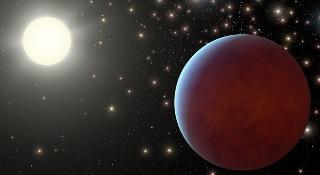
Astronomers have discovered two gas giant planets orbiting stars in the Beehive cluster, a collection of about 1,000 tightly packed stars. Photo: NASA/JPL-Caltech.
PASADENA, CALIFORNIA (BNS): For the first time astronomers have spotted planets orbiting sun-like stars in a crowded cluster of stars.
The starry-skied planets are two so-called hot Jupiters, which are massive, gaseous orbs that are boiling hot because they orbit tightly around their parent stars.
Each hot Jupiter circles a different sun-like star in the Beehive Cluster, also called the Praesepe, a collection of roughly 1,000 stars that appear to be swarming around a common centre.
The Beehive is an open cluster, or a grouping of stars born at about the same time and out of the same giant cloud of material. The stars therefore share a similar chemical composition.
Unlike the majority of stars, which spread out shortly after birth, these young stars remain loosely bound together by mutual gravitational attraction.
"We are detecting more and more planets that can thrive in diverse and extreme environments like these nearby clusters," said Mario R. Perez, the NASA astrophysics programme scientist in the Origins of Solar Systems Programme.
The two new Beehive planets are called Pr0201b and Pr0211b. The star's name followed by a "b" is the standard naming convention for planets. The findings are published in the Astrophysical Journal Letters.
Sam Quinn, the lead author of the paper and his team, in collaboration with David Latham at the Harvard-Smithsonian Centre for Astrophysics, discovered the planets by using the 1.5-meter Tillinghast telescope.
"We know that most stars form in clustered environments like the Orion nebula, so unless this dense environment inhibits planet formation, at least some sun-like stars in open clusters should have planets. Now, we finally know they are indeed there," he said.
The results also are of interest to theorists who are trying to understand how hot Jupiters wind up so close to their stars. Most theories contend these blistering worlds start out much cooler and farther from their stars before migrating inward.
"The relatively young age of the Beehive cluster makes these planets among the youngest known," said Russel White, the principal investigator on the NASA Origins of Solar Systems grant that funded this study.
"And that's important because it sets a constraint on how quickly giant planets migrate inward -- and knowing how quickly they migrate is the first step to figuring out how they migrate."
 Previous Article
Previous Article













The Indian Air Force, in its flight trials evaluation report submitted before the Defence Ministry l..
view articleAn insight into the Medium Multi-Role Combat Aircraft competition...
view articleSky enthusiasts can now spot the International Space Station (ISS) commanded by Indian-American astr..
view article